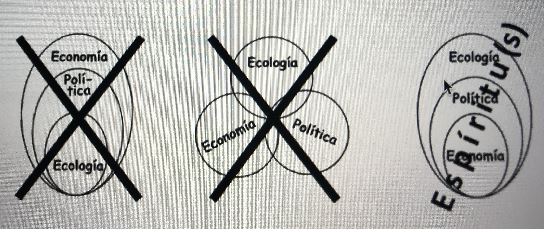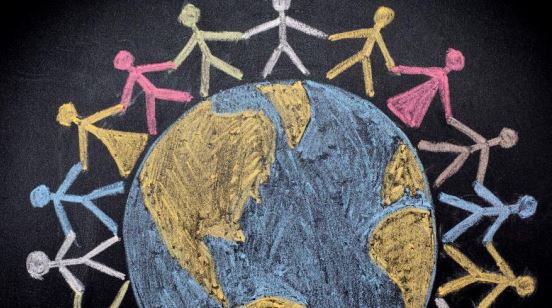Europeinfos : #178- janvier 2015
The agenda for the climate change discussions is taking shape in the midst of important developments. The next COP 21 will be a crucial moment for courageous political decisions.
 The agenda for the climate change discussions is taking shape in the midst of important developments. In this article we would like to comment on three of the major events that have taken place in the recent months and that highlight the path of international engagement: the release of the last IPCC report, the first moves of the Green Climate Fund and the recent COP20 that took place in Lima. But we could add many other positive signals such as the recent agreement between USA and Chinain order to limit greenhouse gas emissions. Although a voluntary agreement, it is heading in the right direction and sends a positive signal to the negotiations.
The agenda for the climate change discussions is taking shape in the midst of important developments. In this article we would like to comment on three of the major events that have taken place in the recent months and that highlight the path of international engagement: the release of the last IPCC report, the first moves of the Green Climate Fund and the recent COP20 that took place in Lima. But we could add many other positive signals such as the recent agreement between USA and Chinain order to limit greenhouse gas emissions. Although a voluntary agreement, it is heading in the right direction and sends a positive signal to the negotiations.
The 5th report by the IPCC, Intergovernmental Panel on Climate Change, made up of 830 scientists from the international community, confirmed, and even reinforced, the message of earlier reports: that human activity is behind the speeding up of global warming and the absolute need to cut greenhouse gas emissions by between 40% and 70% by 2050. By the end of the century, emissions must be reduced to zero in order to limit the rise of the average global temperature to under 2º C. Otherwise, the effects will be severe. The scientists analyse a whole range of possible scenarios for the environment, food safety and poverty.
The IPCC report describes several future scenarios depending on how the world reacts. If nothing is done, if emissions are not reduced, temperatures may rise by up to 4.8 degrees, whereby the volume of glaciers would be reduced by 85% and sea level could rise by 0.82 metres, seriously affecting the balance of ecosystems. If mitigation measures are taken and zero emissions are achieved by the end of this century, the temperature rise could be under 2º C and this could assure a safe future. “There is still time, although very short time“: this was stated at the presentation of the report last November by Rajendra Pachauri, chairman of the IPCC. The conviction of the IPCC, and many others, is that we can still reduce drastically the greenhouse gas emissions but a great deal of political courage is needed.
At the historic summit of Copenhagen 2009, the parties decided to establish the Green Climate Fund, as a way of compensating the efforts of the poorest countries both for mitigation and for adaptation to climate change. The fund is foreseen to reach 100,000 million US $ by 2020. Five years later, the Green Climate Fund is finally a reality and is beginning to attract finance. Following a conference of donors organized in Berlin last November, 22 countries have pledged 9,600 million US $. The US contributes nearly a third, 3,000 million. Japan, 1,500 million. UK, 1,100 million. France and Germany, 1,000 million each. Italy, 313 million and Spain will contribute 150 million.
The doubts on this initiative are whether we are talking about new money or whether the donors are simply changing the label on the money already committed, mostly for development aid. For the UK this is the case: “The UK money comes from existing funds earmarked for international climate work under the UK’s commitment for 0.7% of gross national income to overseas development assistance”. For many developing countries and civil society organizations this is unacceptable as it means the diversion of resources already committed to other needs. The requirement of fresh money for this fund is a logical request in order to reduce poverty – as poverty is also one of the contributors to climate change- and to have an impact on the consumerist life styles of the developed countries.
Within a year the UN will hold a decisive meeting in Paris that must approve the replacement of the Kyoto protocol, which expires in 2020. This protocol, which dates from 1997, has been diluted over time. In fact, it was not endorsed by the United States nor China nor Russia. Finally, only the European Union, Australia and Norway have stayed with Kyoto. Unfortunately, the Protocol has failed to be the instrument which is needed. The emissions trading mechanisms have not been efficient in promoting the reduction of gas emissions. Different reasons have coincided to minimize the impact of these instruments: the cap was not well defined, the price has not been attractive enough for the reduction of emissions and the secondary markets have been involved in a long record of fraud.
The recent conference of the parties, COP 20, that took place in Lima in December 2014, has been the preparatory conference for the next United Nations Framework Convention on Climate Change, or COP 21, that will take place in Paris in December 2015. This meeting will be crucial for the future of the negotiations on climate change. The Kyoto protocol is due to expire and it has to be renewed with a new agreement. The expectation is that the new agreement should be binding – to ensure that it will be accomplished – and that it will have to be very courageous as the reduction of greenhouse emissions – in order to be effective according to the IPCC – has to have a real impact: a reduction of 40% to 70% at least, by the end of 2050. And this is only to confine the global warming to a rise of under 2º C.
Expectations on COP 21 are very high. The international community cannot afford another disaster such as that in Copenhagen. But we have also seen the capacity to reach agreements with no real content, Rio+20 for example. The scientific community and civil society are again together promoting awareness of the crucial challenges facing our planet; the pressure on Governments will strongly increase as we approach the Conference. This time we will need a consistent agreement that can point the path towards a sustainable future for all.
Jose Ignacio Garcia SJ
JESC




Leave A Comment
You must be logged in to post a comment.